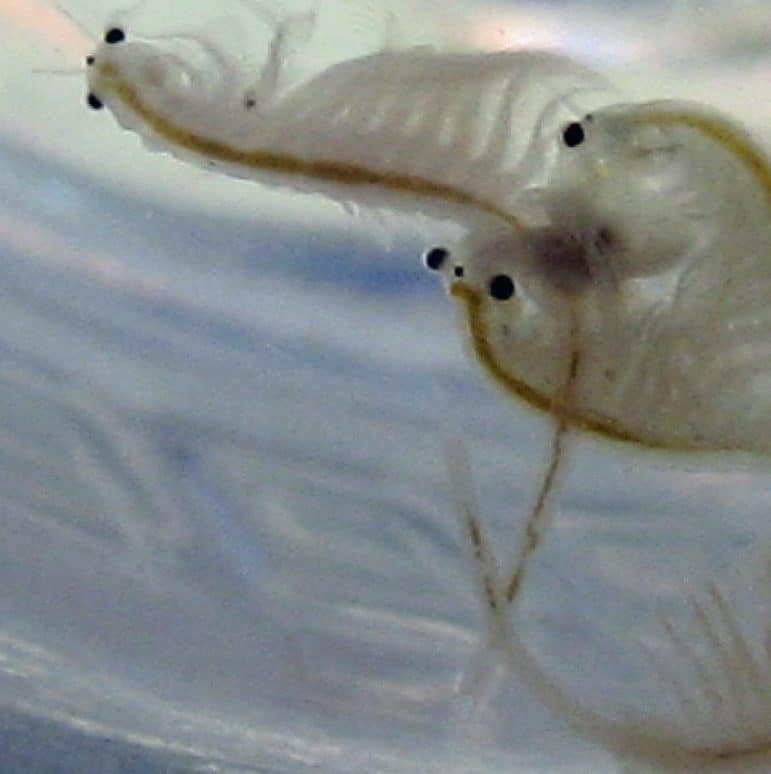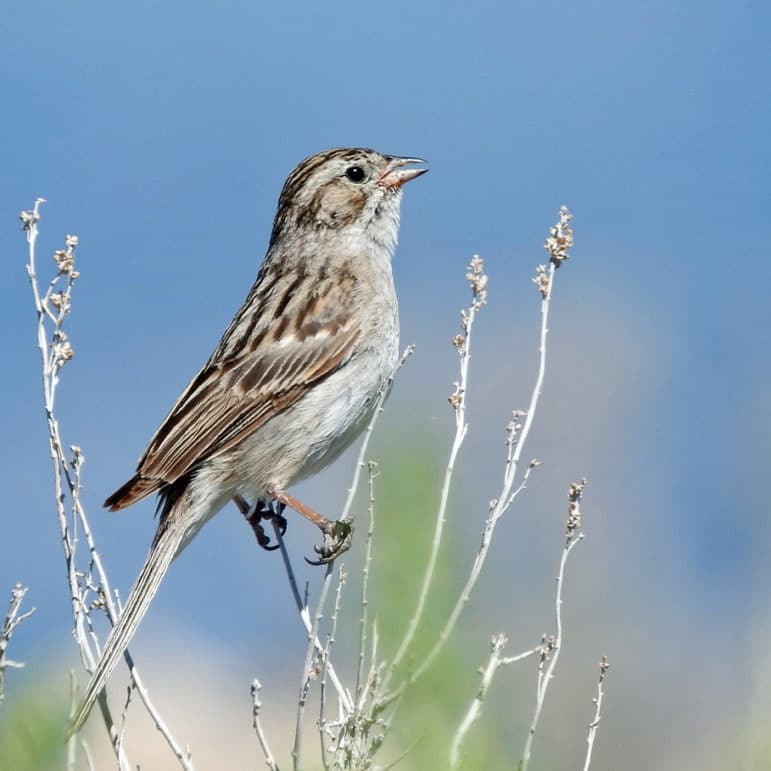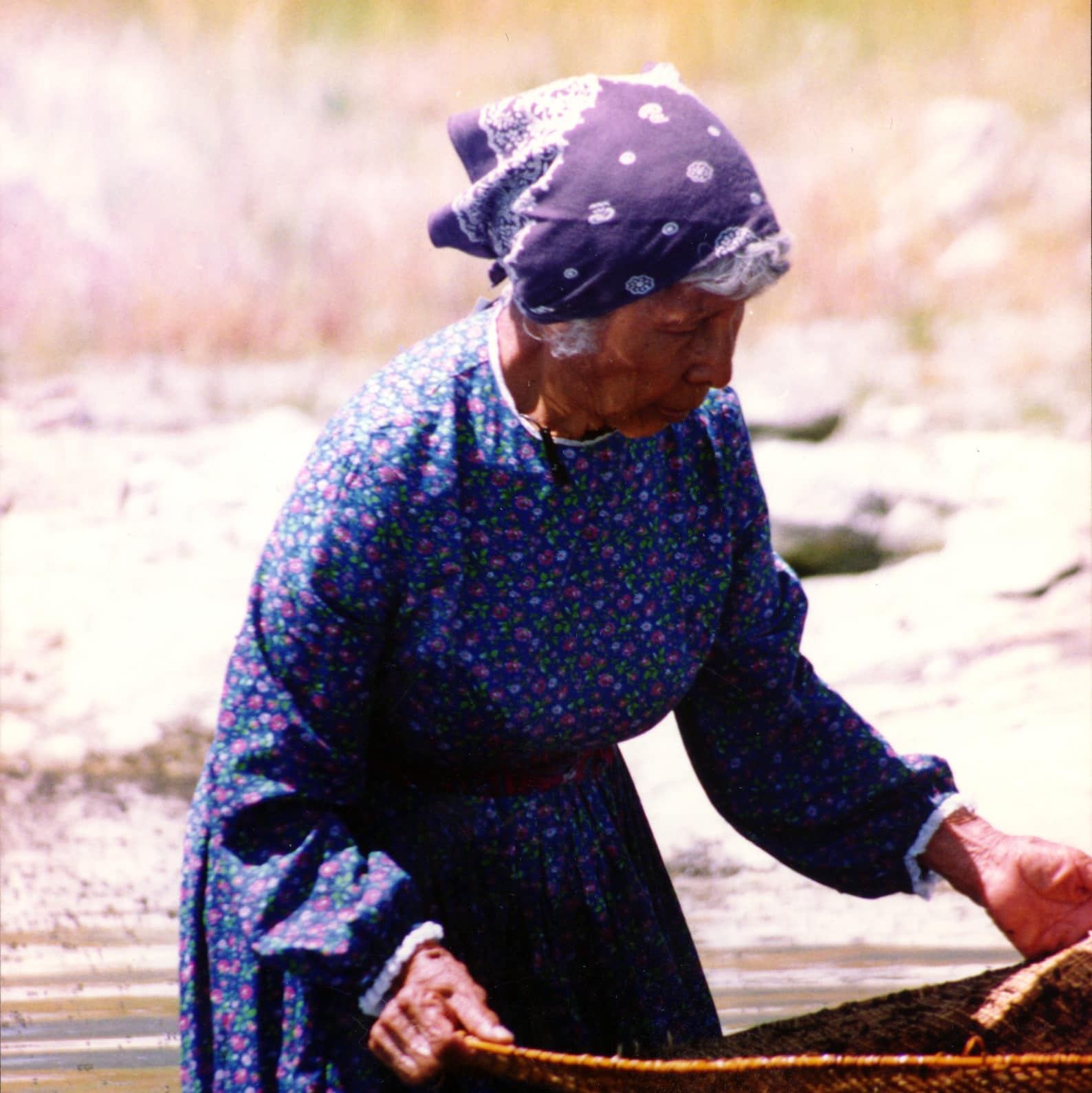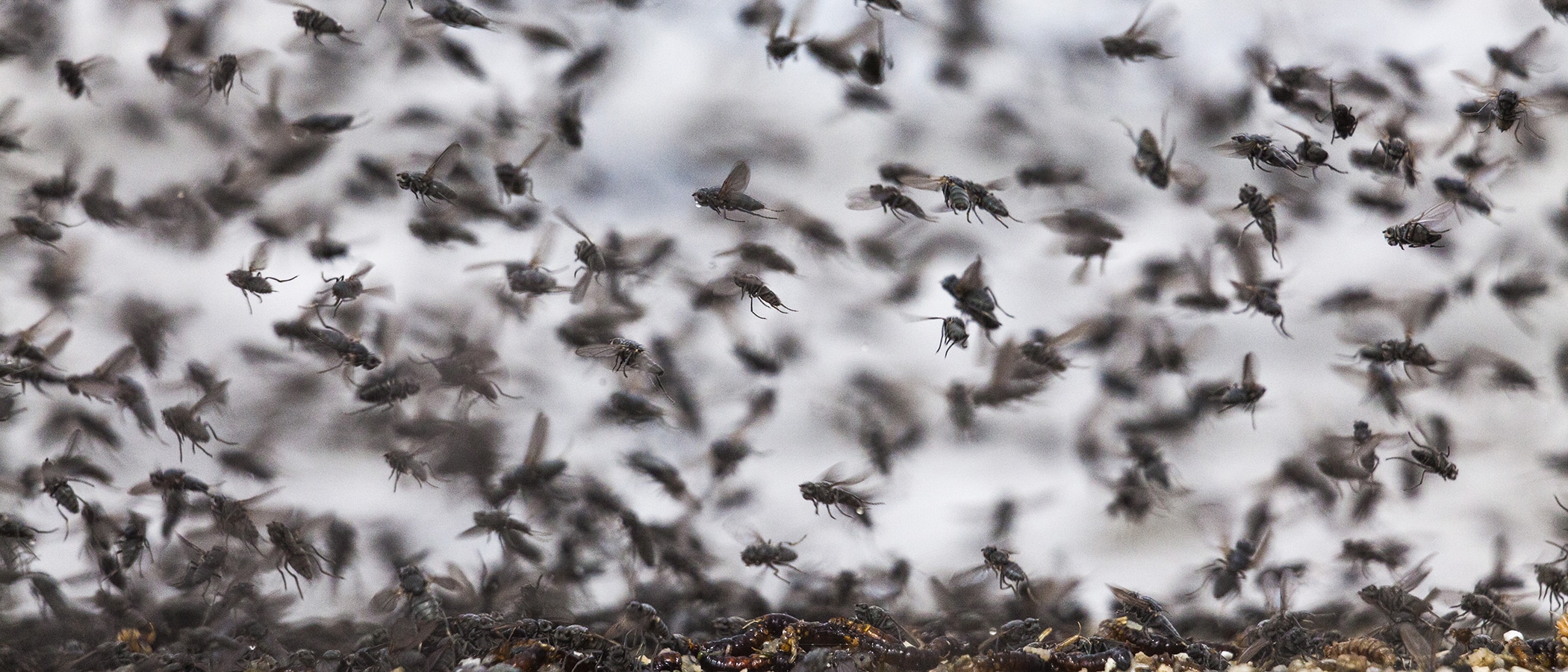
Alkali flies are one of the unusual creatures that make up Mono Lake’s unique and highly productive ecosystem.
In late summer, alkali flies carpet the shoreline, providing food for millions of migratory birds, and a wild experience for visitors when clouds of flies swarm into the air as people approach.
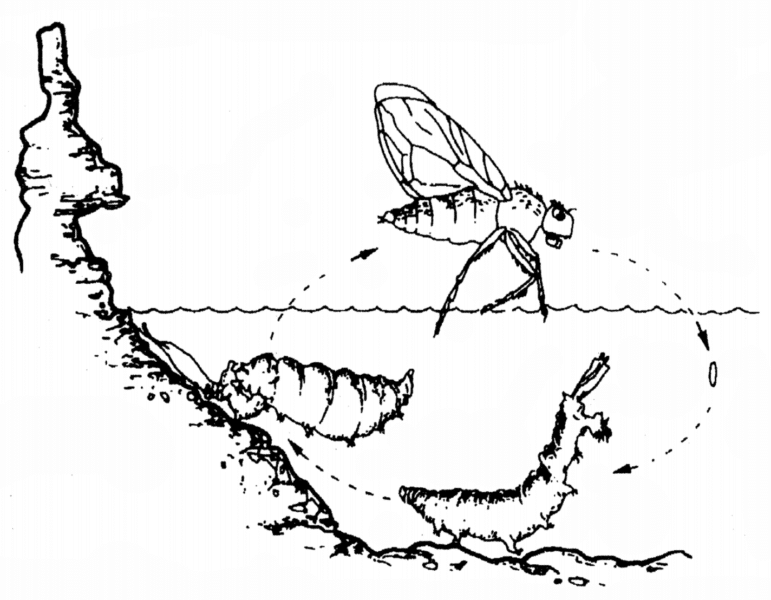
Scuba diving flies
The alkali fly, Ephydra hians, lives an unusual life at Mono Lake. Alkali flies spend three of their four life stages entirely underwater. The larval and pupal life stages develop within the lake. When the adult fly is ready to emerge from the pupa case, the fly emerges to float to the surface, where it begins its adult life cycle.
Eventually adult flies return underwater to lay eggs or feed on algae. Tiny hairs trap a thin layer of air that allows the fly to “scuba dive.” On calm days in the summer you can watch their small, silvery teardrop shapes amble along the bottom of the lake in shallow water.
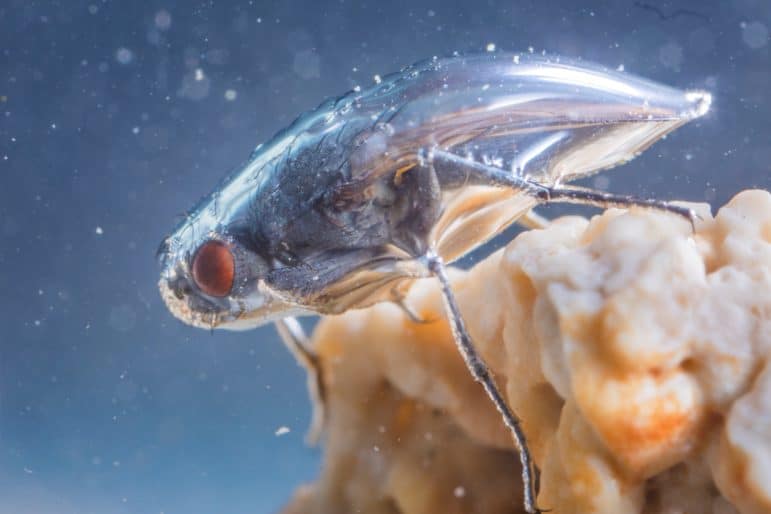
A meal for many
At Mono Lake, flies are food. Alkali flies provide more fat and protein for hungry birds than the brine shrimp. Flies are the principal food that phalaropes use to grow new feathers and then migrate 3,000 miles non-stop to South America. In the mid to late summer Wilson’s Phalaropes can be seen spinning in shallow water, creating a miniature vortex that brings alkali fly larvae and pupae to the surface for easy pickings. You can also watch California Gulls and Brewer’s Blackbirds run along the shoreline with beaks open filling themselves with adult alkali flies—we call this the “vacuum cleaner” foraging method.
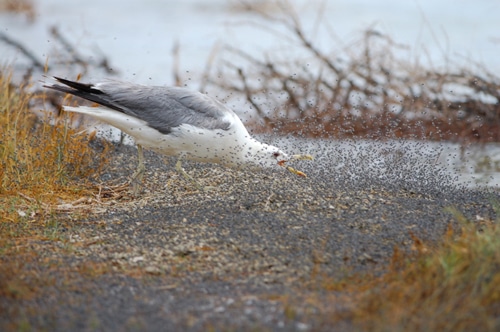
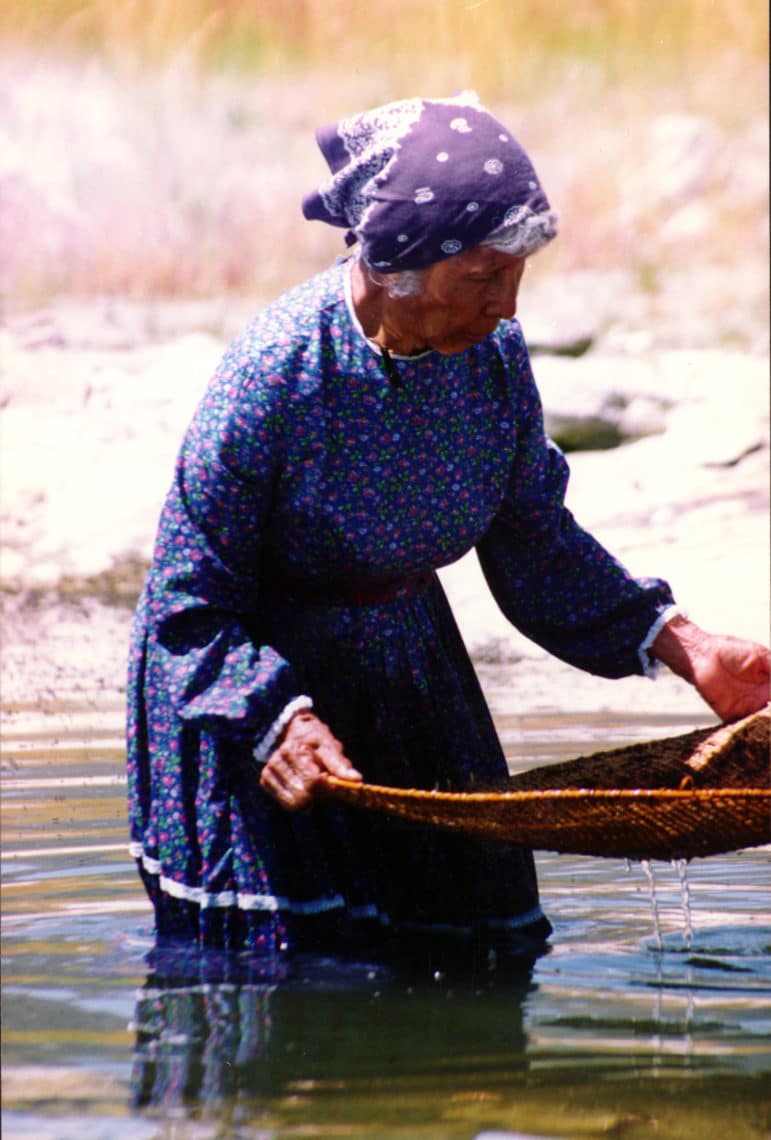
Humans have also depended on the flies for food. Historically, the local Mono Lake Kootzaduka’a Tribe harvested large numbers of alkali fly pupae (kootzabe) in shallow water along the lakeshore. Since the pupae are rich in fat and protein, they were an excellent source of food that were dried and used in stews. The Kootzaduka’a traded this delicacy with neighboring people as well. Kootzaduka’a means “fly eater” in the Kootzaduka’a language.
After miners and ranchers colonized the basin and destroyed the Indigenous way of life, the tradition of eating kootzabe diminished, but some families continue to enjoy the delicacy today.
DO THE FLIES BITE?
Nope! Alkali flies move away from people when they approach. They may land on you if you stand still in the middle of the ankle-high cloud, but they only tickle a little as they walk around on your skin.
See Mono Lake’s alkali flies in action:
Scientific paper about alkali flies in the Proceedings of the National Academy of Sciences (PNAS): Superhydrophobic diving flies (Ephydra hians) and the hypersaline waters of Mono Lake
Learn More
Top photo courtesy of Floris van Breugel.

